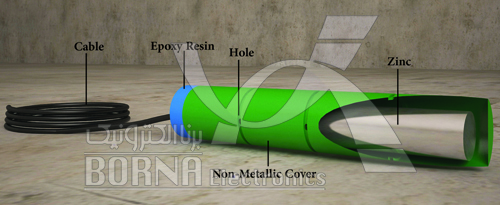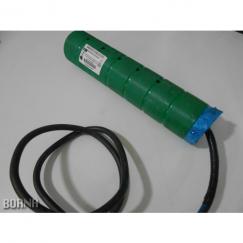Zinc Reference Electrodes
The use of a metal reference electrode to measure potential difference in direct contact with the electrolyte around the structure may not make sense, but the reference zinc electrode in seawater is suitable for many applications. Successful samples have also been observed in the use of this electrode in the tanks bottom with the backfill, although many designs today use copper/ copper sulphate reference electrodes. Zinc reference electrode is cheaper than silver/ silver chloride reference electrode and is used instead unless a high degree of stability is required. In addition, the mechanical stability of this type of electrode is much higher than other reference electrodes which have different and fragile components.
High purity zinc ingots (minimum 99.9% with maximum iron content of 0.0014%) are used in the production of zinc reference electrodes. For connecting, a copper cable with chloride resistance coating and with 10 mm2 or 16 mm2 cross section is used and the cable is welded to the steel core inside the electrode. The interface between the copper cable and the steel rod is coated with epoxy resin.
Zinc reference electrodes can be used with or without PVC sheath in seawater. The accuracy of the potential measurement using a reference zinc electrode in seawater is about ±30 mV, which is an acceptable accuracy.

Schematic of zinc reference electrode used in seawater and its components
Borna Electronics Co. declares its readiness to design and manufacture zinc reference electrodes based on the requests of respected clients or project needs.


